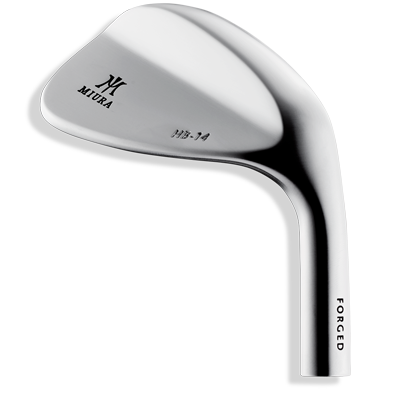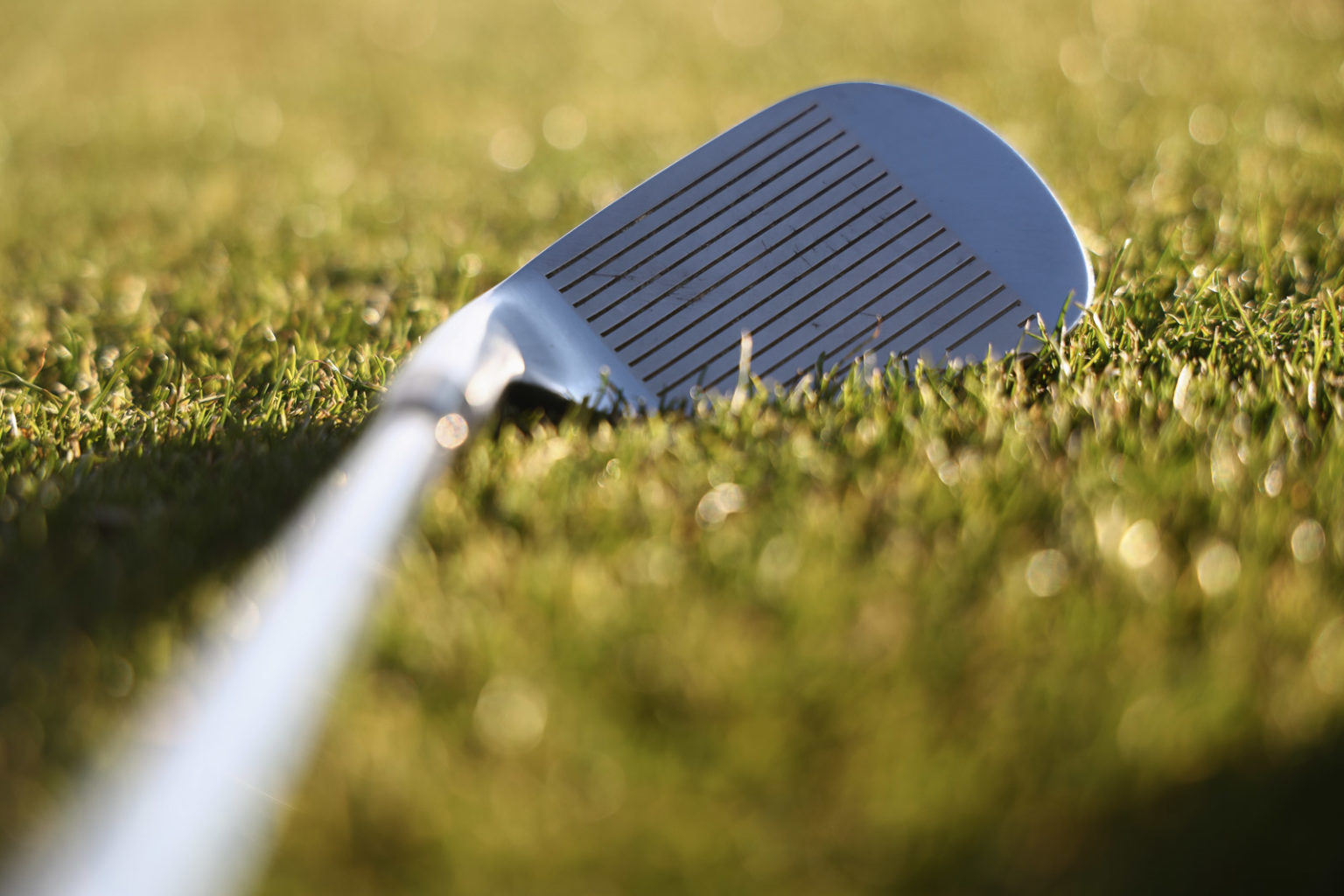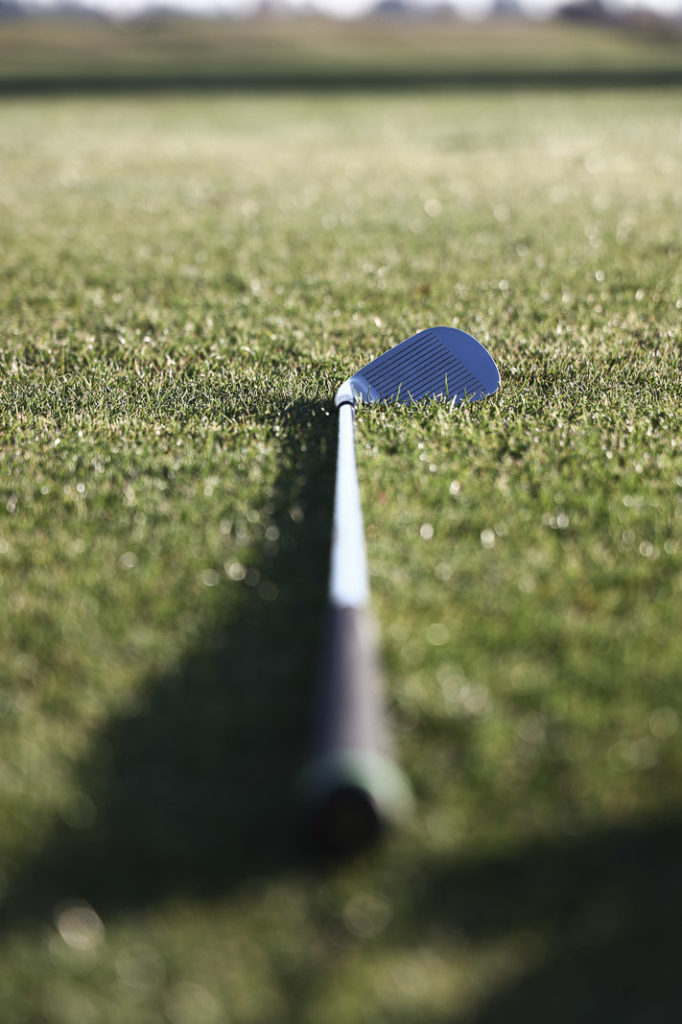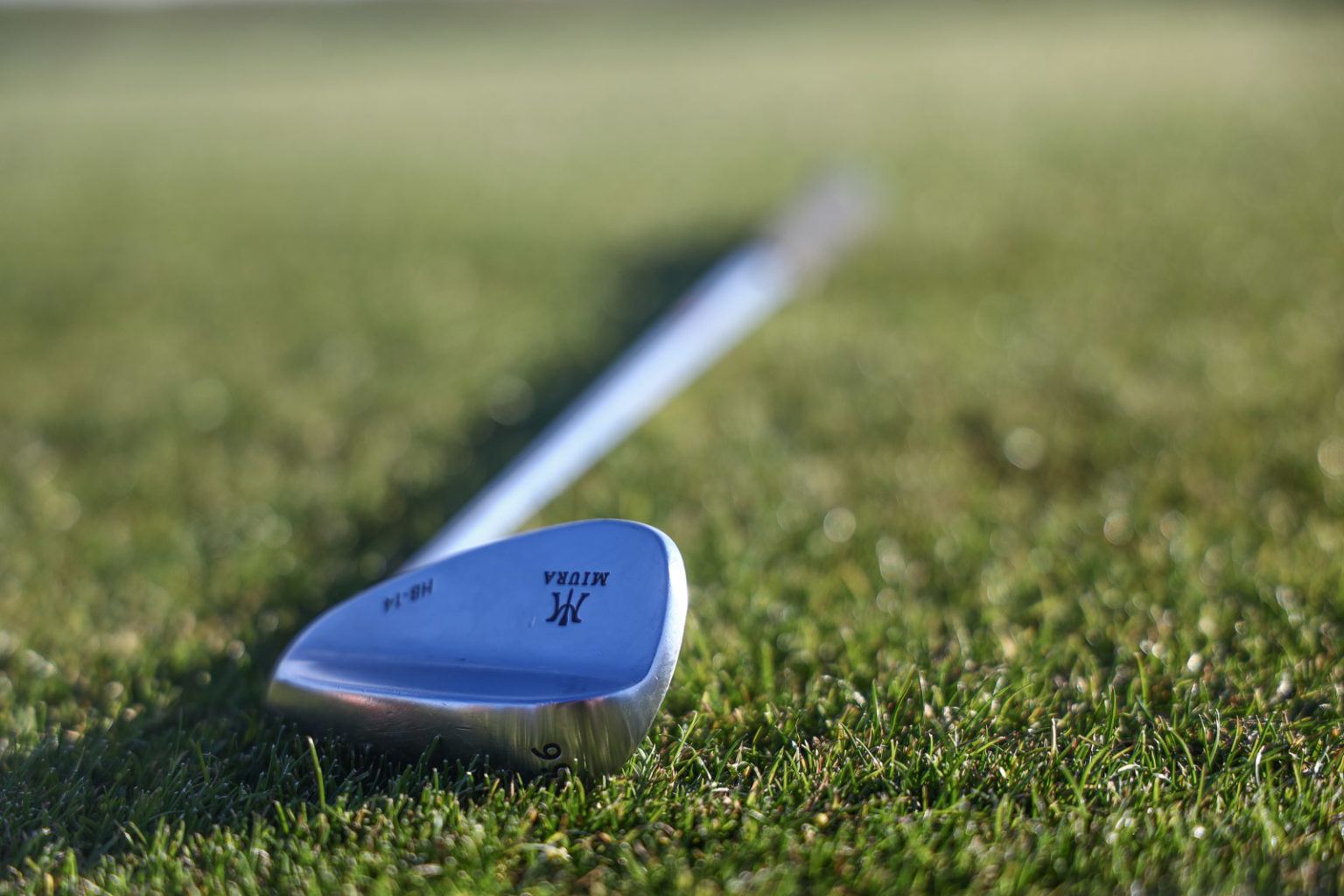If you’ve been golfing for awhile, chances are at some point you’ve heard about the lore of Miura wedges.
Beautiful handmade Japanese wedges that help you stop the ball on a dime, and feel better than cutting a knife into warm butter.
Yeah, I’ve heard all of that too.
But I’d never actually played with a Miura wedge before – so had no idea if they were the real deal.
OR more specifically, if they could help someone like myself who wasn’t a scratch golfer.
Earlier this summer I went out to Pronghorn Resort to do a fitting at TrueSpec. And lo and behold, the wedges I was fit for? Mirua HB-14 56 degree wedge.
It only took half a dozen shots to start to feel the difference, but it was there. I was impressed, and I wanted to know more.
A few weeks later, the club arrived and I’ve now played about 20 rounds with it.
If you’re the type of person that isn’t into reading, let me save you the trouble: this wedge is everything I expected it to be and more.
I’m honestly surprised, as I didn’t think it would have that much of an impact, yet here we are.
Want to know more of my thoughts on the Miura wedges? Read on.
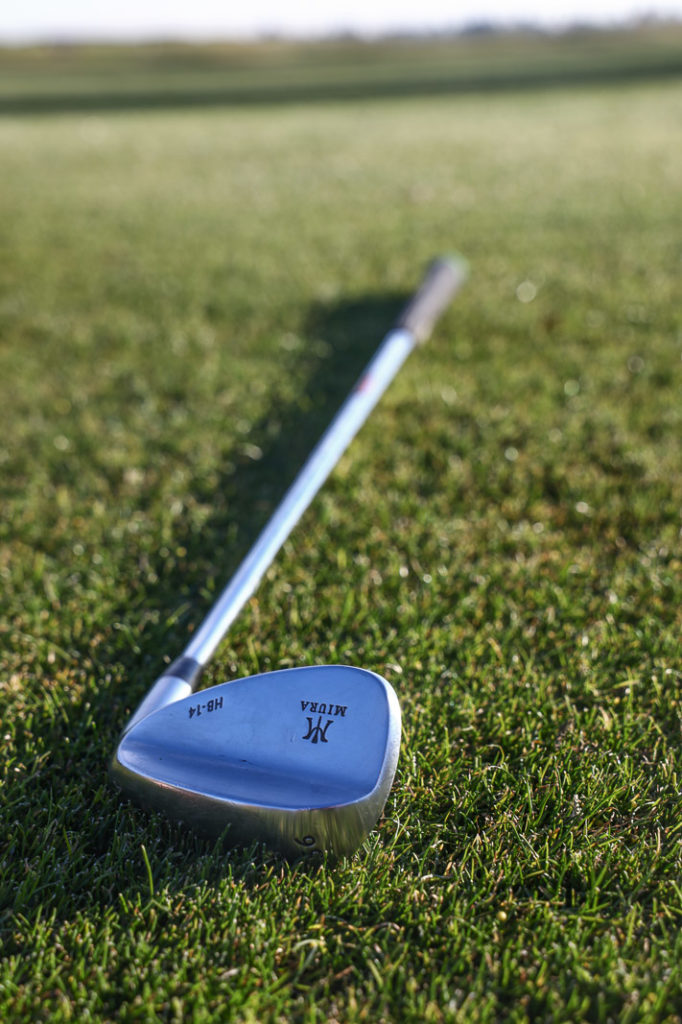
Miura Golf: First Impressions
I should preface this review like I do with my other club reviews – this won’t be a technical overview. There are plenty of other blogs that do that. I’m a 9 handicap (going on 19 at the moment), and this is simply a review of my thoughts on the club in comparison to other wedges I’ve used, and my own personal experience.
So take that for what it’s worth.
My first impression upon seeing the Miura Tour Wedge was that it’s absolutely gorgeous.
Miura is known for making some of the best handmade forged wedges in the world, and it shows.
The wedge has an elegant simplicity that is often missing in modern golf clubs. So many clubs these days have aggressive lines, visible weighting, and aggressive branding.
Miura doesn’t need all of that, it looks beautiful in its restraint. A few stamped logos and shiny chrome is all it needs.
On the other token, this wedge was intimidating. I can see the beauty in a lot of tour level blade irons – but that doesn’t mean it’s the right club for me.
Looking at this, it looks like a wedge a pro should use (hence the name, Tour Wedge).
And frankly, I wasn’t sure if my golfing abilities were going to be enough to make use of it.
It felt like giving a 16 year old a Lamborghini after walking straight out of his drivers test.
What Does HB Stand For?
So here’s the thing, as a golf blogger there are a lot of things I should have a better understanding of.
How course and slope factor into handicaps…
Why a four layer golf ball is better than two or three core ball…
And what effect the bounce of a club has on your shots.
While I’m still no expert, I did learn a few things during my fitting.
I said that my typical miss with wedges would be to hit them fat.
Jason, the fitter, explained that part of that is due to the wet clay soil that I’m used to playing on in Portland. Especially in the winter, it would be much easier to dig and hit a fat shot.
To negate that he suggested a higher bounce club that would act less like a shovel, and make the club more forgiving on those pitch shots.
Cool, I’ll believe it when I see it.
Mirua Wedges: How Do They Perform?
The first round I played with the Miura Tour Wedge was on the Ghost Creek course at Pumpkin Ridge.
The first hole has a massive green and I found myself in the rough to the right side, with the entire green to work with as the pin was on the opposite side.
I pulled out the club, threw the ball up in the air, and watched it go up, come down, check, and stop 3 feet from the hole.
Now, you can’t draw any conclusions off of one shot – but I rarely see the ball check like this, so I was intrigued.
Over the course of the next 10 rounds, I found that as a whole my short game confidence has improved tremendously.
Arccos is telling my that in that time period I’ve gained an extra stroke in my short game, and I’ve been getting up and down far more often than I used to.
The club just feels right. It’s tough to explain what I mean by this, but my fears of it being too much club for me were unfounded.
Friends that I play with on a regular basis have asked in multiple instances “what wedge are you using? I’ve never seen you hit shots like this!”
It’s inspired confidence in my short game that has been lacking for awhile.
But….
For as much as I’ve loved my experience with the Miura 56 degree wedge, it isn’t some be-all-end-all panacea.
I’m still bordering on a double digit handicap.
I’ve had shots off the hosel.
I’ve hit it fat.
It’s not like the club has instantly made me a plus handicap.
But it has helped me get better.
Before where 4 out of 10 shots might have been fat or thin. Now maybe 2 or 3 out of 10 aren’t great.
And whereas I might get up and down 4 times out of 10 from off the green, my quality of good shots has improved and I’m closer to 5 or 6 times out of 10.
The high bounce has certainly helped my tendency to dig at the ball, but it’s still a work in progress.
Final Impressions of the Miura Wedges
Overall, I’ve been incredibly impressed with Miura.
Based on my one club experience it lives up to the hype, and I’ve noticed a marked improvement in my short game because of it.
However, this performance doesn’t come cheap.
My standard line after someone comments on a great wedge shot these days is “Well, that’s what a $295 wedge will do for you.”
Will that same wedge have the same results for you? I can’t tell you that, we’re all different.
But if you’ve been considering getting fit and investing in some high-end wedges, you’d absolutely be remiss not to look at Miura in your quest.
I can safely say it’s the most confidence-inspiring, and beautiful wedge I’ve played with to date, and one I look forward to having in the bag for many years to come.
Looking for a more beginner friendly wedge and aren’t afraid to try something a little more unique? Check out this Cutter wedge review.

